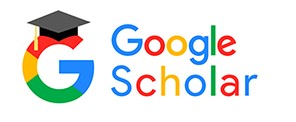Ways forward in the teaching of Physical Education: The private and public university experiences
Keywords:
physical education, gadgets, e-learning tools, private, publicAbstract
In recent years, the integration of digital technology in education has become increasingly prevalent, with many institutions adopting e-learning tools to enhance the teaching and learning experience. Such practice was intensified with the kickoff of the pandemic in 2020 when most, if not all, educational institution around the world were forced to come up with a more innovative technique in teaching to continue learning. Schools and universities, be it private or public, opted to shift to online education. This study seeks to the variations in the technological gadgets and e-learning tools in the teaching of physical education classes through identification, chi-square testing, and Focus Group Discussion using the Replacement and Amplification of (RAT) Framework. Specifically, it examines the availability of these resources in different types of universities and investigates their effectiveness in promoting student engagement and improving pedagogical practices while exploring the differences between digital gadgets and e-learning tools and their availability in universities, with a specific focus on the effectiveness of teaching of physical education classes. The findings indicate that the types of digital gadgets (X2, 57.793, df=8), p <.000 <.05) and e-learning tools (X2, 63.36, df=19, p <.001 <.05) used by the students vary depending on the type of university- whether private or public, due to the accessibility for the students, and the popularity of the tools and apps. Furthermore, the use of e-learning tools is beneficial in enhancing pedagogical practices in physical education classes and promoting student engagement in learning tasks because of their benefits. Additionally, the study recommends further research on the use of these tools in the new educational landscape.
References
Abbas, J., Aman, J., Nurunnabi, M. & Bano, S. (2019). The Impact of social media on learning behavior for sustainable education: Evidence of students from selected universities in Pakistan. MDPI: Sustainability, 11(6), 1683. https://doi.org/10.3390/su11061683 DOI: https://doi.org/10.3390/su11061683
Aleksina, A. Kazakova, O. & Aleksin, A. (2021). Application of digital solutions in the physical culture and sports industry as an element of sustainable regional development. E3S Web of Conferences 295, 01015 (2021). WFSDI 2021. https://doi.org/10.1051/e3sconf/202129501015 DOI: https://doi.org/10.1051/e3sconf/202129501015
Al-hawamdeh, B.O.S. & Alam, S. (2022). Praxis and effectiveness of pedagogy during pandemic: An investigation of learners’ perspective. Hindawi Education Research International, 3671478, 1-9. https://doi.org/10.1155/2022/3671478 DOI: https://doi.org/10.1155/2022/3671478
Ali, W. (2020). Online and remote learning in higher education institutes: A necessity in light of COVID-19 pandemic. ERIC, Higher Education Studies,10(3),16-25. https://eric.ed.gov/?id=EJ1259642 DOI: https://doi.org/10.5539/hes.v10n3p16
Anderson, D. R., Sweeney, D. J., Williams, T. A., Camm, J. D., & Cochran, J. J. (2018). Modern Business Statistics with Microsoft office Excel (6th ed.). SouthWestern/Thomson Learning.
Ansari, J.A.N. & Khan, N.A. (2020). Exploring the role of social media in collaborative learning in the new domain of learning. SPRINGER: Smart Learning Environments,7(9). DOI: https://doi.org/10.1186/s40561-020-00118-7
Bastiani, L., Galanti, G., & Ferrari, A. M. (2020). Wearables for physical activity monitoring in school age children. Children, 7(3), 18.
Baran, E. (2014). A Review of Research on Mobile Learning in Teacher Education. Educational Technology & Society, 17 (4), 17–32. http://www.jstor.org/stable/jeductechsoci.17.4.17
Belleza, S. S., Ompoc, R. D. & Vestil, C. F. (2021). Challenges of PE Teachers to educational technologies in new normal: The changing role of Teachers. International Journal of Research Publication, 86(1), 74-81. https://doi:.10.47119/IJRP1008611020212320 DOI: https://doi.org/10.47119/IJRP1008611020212320
Bundy, A. C., Naughton, G., Tranter, P., Wyver, S., Baur, L., Schiller, W., ... & Bauman, A. (2011). The Sydney playground project: popping the bubblewrap—unleashing the power of play: a cluster randomized controlled trial of a primary school playground-based intervention aiming to increase children's physical activity and social skills. BMC Public Health, 11(1), 1-11. DOI: https://doi.org/10.1186/1471-2458-11-680
Cavus, N., & Ibrahim, D. (2009). M-learning: An experiment in using SMS to support learning new English language words. British Journal of Educational Technology,40(1), 78–91. DOI: https://doi.org/10.1111/j.1467-8535.2007.00801.x
Chawinga, D. W. (2017). Taking social media to a university classroom: teaching and learning using Twitter and blogs. International Journal of Educational Technology in Higher Education. https://www.doi.org/10.1186/s41239-017-0041-6 DOI: https://doi.org/10.1186/s41239-017-0041-6
Cojocaru, A.M., Bucea-Manea-Tonis, R., Jianu, A., Dumangiu, M.A., Alexandrescu, L.U., & Cojocaru, M. (2022). The Role of Physical Education and Sports in Modern Society Supported by IoT—A Student Perspective. Sustainability, 14, 5624. https://doi.org/10.3390/ su14095624 DOI: https://doi.org/10.3390/su14095624
Creswell, J.W. (2013). Steps in conducting a scholarly mixed methods study. DBER Speaker Series, 48, 1-54. https://digitalcommons.unl. edu/dberspeakers/48
Culpan, I., & Kılıç, E. (2020). The effect of using TikTok in physical education classes on the development of motor skills. Pedagogical Research, 5(3), em0096.
Das, Ronnie, and Wasim Ahmed (2020). Despite Concerns, COVID-19 Shows How SocialMedia has Become an Essential Tool in the Democratization of Knowledge. The London School of Economics NS Political Science, June 5, 2020.
Dzhingaro, Boris (2020). Types of Modern Communications Devices. WebRTC Expert Feature Special Guest, February 10, 2020 https://www.webrtcworld.com/topics/from-the-experts/articles/ 444422-types-modern-communications-devices.htm
Gikas, J., & Grant, M. M. (2013). Mobile computing devices in higher education: Student perspectives on learning with cellphones, smartphones & social media. Internet and Higher Education Mobile, 19, 26. https://doi.org/10.1016/j.iheduc.2013.06.002. Google Scholar DOI: https://doi.org/10.1016/j.iheduc.2013.06.002
Grob-Zakhary, R. (2020, Oct.15). COVID-19 is an Opportunity to Reset Education. Here are 4 Ways How. World Economic Forum, Oct. 15, 2020, SGD 04: Quality Education/COVID-19.
Bastiani, L., Galanti, G., & Ferrari, A. M. (2020). Wearables for physical activity monitoring in school age children. Children, 7(3), 18.
IBE-UNESCO (2023). Collaborative Learning. UNESCO: International Bureau of Education, 15, Route des Morillons 1218 Le Grand-Saconnex, Geneva, Switzerland. http://www.ibe.unesco.org/en/ glossary-curriculum-terminology/c/collaborative-learning Enhanced Creativity
Hughes, J., Thomas, R. & Scharber, C. (2006). Assessing Technology Integration: The RAT – Replacement, Amplification, and Transformation - Framework. In C. Crawford, R. Carlsen, K. McFerrin, J. Price, R. Weber & D. Willis (Eds.), Proceedings of SITE 2006--Society for Information Technology & Teacher Education International Conference (pp. 1616-1620). Orlando, Florida, USA: Association for the Advancement of Computing in Education (AACE). https://www.learntechlib.org/primary/p/22293/.
Joaquin, J.J.B., Biana, H.T., and Dacula, M.A. (2020). The Philippine Higher Education Sector in the Time of COVID-19. Southeast Asian Research Center and Hub, De La Salle University, Manila, Philippines DOI: https://doi.org/10.3389/feduc.2020.576371
Kim, C.J.H. & Padilla, A. M. (2020). Technology for Educational Purposes Among Low-Income Latino Children Living in a Mobile Park in Silicon Valley: A Case Study Before and During COVID-19. Hispanic Journal of Behavioral Sciences, 42(4), 498-514. https://doi.org/10.1177/0739986320959764 DOI: https://doi.org/10.1177/0739986320959764
Kimmons, R., Miller, B. G., Amador, J., Desjardins, C. D. & Hall, C. (2015). Technology integration coursework and finding meaning in pre-service teachers’ reflective practice. Education Tech Research Development. https://doi:10.1007/s11423-015-9394-5 DOI: https://doi.org/10.1007/s11423-015-9394-5
Jung, E., & Lee, J. W. (2021). The Effect of e-Learning Environment on Physical Education Learning Achievement and Learner Satisfaction. Journal of Digital Convergence, 19(4), 159-169.
Khamidi, A. & Hartoto, S. (2022). Management physical education learning model in the era of the covid-19 pandemic: A literature review. Jurnal SPORTIF: Jurnal Penelitian Pembelajaran, 8(1), 96-117. https://doi.org/10.29407/js_unpgri.v8i1.17802 DOI: https://doi.org/10.29407/js_unpgri.v8i1.17802
Linnes, C., Ronzoni, G., Agrusa, J. & Lema, J. (2022). Emergency remote education and its impact on higher education: A temporary or permanent shift in instruction? Educ. Sci., 12, 721. https://doi.org/ 10.3390/educsci12100721 DOI: https://doi.org/10.3390/educsci12100721
Marzano, A., Vegliante R. & De Angelis, M. (2015). Quali-quantitative approch in educational research. University of Salermo and University of Rome Tor Vergata, Italy.
Moreno-Ger, P., Burgos, D., & Torrente, J. (2009). Digital games in eLearning environments: Current uses and emerging trends. Simulation & Gaming, 40(5), 669-687. DOI: https://doi.org/10.1177/1046878109340294
Mupfiga, M., Mupfiga, P. & Zhou, T.G. (2017). Enhancing Teaching and Learning through the Use of Mobile Technologies in Zimbabwean Universities. Journal of Systems Integration, 2, 43-51. https://doi: 10.20470/jsi.v8i2.298
Neuwirth, L. S., Jovi¬c, S. & Mukherji, B. R. (2021). Reimagining higher education during and post-COVID-19: Challenges and opportunities. Journal of Adult and Continuing Education, 27(2), 141-156. https://doi: 10.1177/1477971420947738 DOI: https://doi.org/10.1177/1477971420947738
Rodríguez, M.L. & Pulido-Montes, C. (2022). Use of digital resources in higher education during COVID-19: A literature review. Educ. Sci., 12(612), 1-19. https://doi.org/10.3390/ educsci12090612 DOI: https://doi.org/10.3390/educsci12090612
Roniel, O. & Diolanharliedh (2020). Tiktok as a new trend in social media. BRAINLY-Technology and Home Economics-Senior High School. https://brainly.ph/question/6167990
Sasere, O. B. & Sekitla D. M. (2020). Global perceptions of faculties on virtual programme delivery and assessment in higher education institutions during the 2020 COVID-19 Pandemic. ERIC, International Journal of Higher Education, 9(5),181-192. https://eric.ed.gov/?id=EJ1270557 DOI: https://doi.org/10.5430/ijhe.v9n5p181
Steinberg, C., Zühlke, M. & Jennett, F. (2019). Aesthetic education revised: a contribution to mobile learning in physical education. Ger J Exerc Sport Res 2020, 50, 92–101 https://doi.org/10.1007/s12662-019-00627-9 DOI: https://doi.org/10.1007/s12662-019-00627-9
Chan, W.T.Y., Leung, C.H. (2016). The use of social media for blended learning in tertiary education. Universal Journal of Educational Research, 4(4), 771-778. DOI: 10.13189/ujer.2016.040414 s DOI: https://doi.org/10.13189/ujer.2016.040414
Whittle, R. J., Telford, A., & Benson, A. C. (2018). Teacher’s perceptions of how they influence student academic performance in VCE Physical Education. Australian Journal of Teacher Education, 43(2). http://dx.doi.org/10.14221/ajte.2018v43n2.1 DOI: https://doi.org/10.14221/ajte.2018v43n2.1
- PDF | 246
- Abstract Views | 361
Published
How to Cite
Issue
Section
Copyright (c) 2023 Bayani Matitu, Rosalinda Santiago

This work is licensed under a Creative Commons Attribution-NonCommercial-NoDerivatives 4.0 International License.











